New York State, known as the Empire State, is rich in history, diverse in geography, and vibrant in culture. This comprehensive guide explores its significant historical milestones, key geographical features, thriving economic and cultural hubs, and notable landmarks. Dive into the wonders of New York State and discover what makes it a unique and influential part of America.
Key Takeaways
- New York State’s history is shaped by diverse Native American tribes, European colonization, and key events in the American Revolution, influencing its cultural and political landscape.
- The state’s diverse geography includes significant water bodies, national parks, and scenic regions, offering endless outdoor activities and showcasing natural beauty.
- New York is a major economic and cultural hub, mainly through New York City, Upstate New York, and Long Island, each contributing unique industries and cultural experiences.
Historical Background
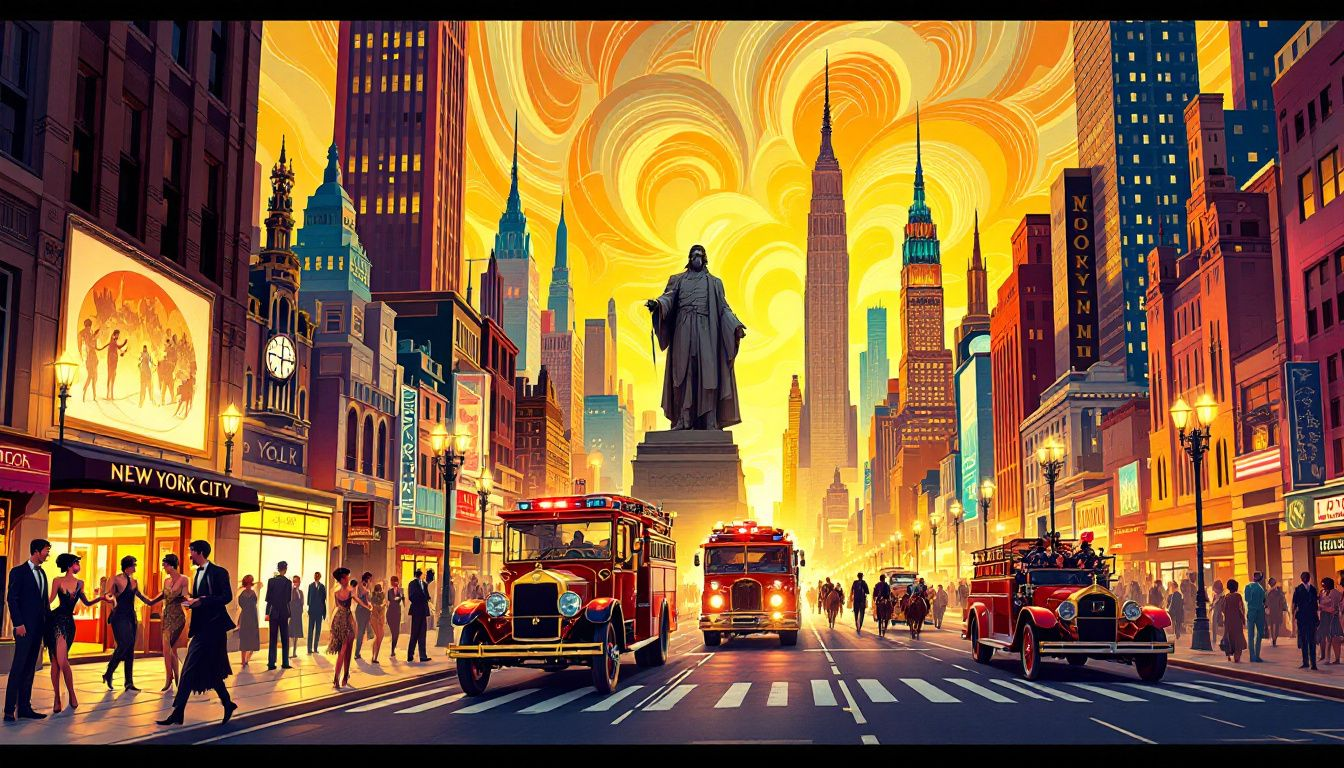
New York’s history is as rich and varied as the state itself. The story begins around 10,000 B.C., when the first inhabitants settled in the region. Before the arrival of European immigrants, the area was home to diverse Native American tribes, each with its own unique culture and traditions. These early inhabitants played a crucial role in shaping the state’s history.
The arrival of European colonizers brought significant changes to the region. The establishment of trade routes and the subsequent economic growth transformed New York into a bustling hub of activity. The state’s strategic location made it a key battleground during the American Revolution, influencing the course of America’s fight for independence.
New York’s rich historical tapestry is woven with tales of exploration, conflict, and resilience, setting the stage for its emergence as a powerful state.
Native American Tribes
Before the influx of European immigrants, New York was predominantly inhabited by two main Native American tribes: the Iroquois and the Algonquians. The Iroquois, a confederation of several tribes, were particularly influential in the political landscape of North America. Their sophisticated governance system and strategic alliances significantly influenced the region’s development.
The Algonquians, on the other hand, were known for their distinct languages and cultural practices. Both tribes profoundly impacted the state’s history, leaving behind a legacy that continues to influence New York’s cultural fabric. Their interactions with European settlers were complex, marked by cooperation and conflict, ultimately shaping the state’s history.
European Colonization
The arrival of European immigrants in New York led to significant demographic and economic changes. The establishment of the Erie Canal in 1825 was a pivotal moment, as it became a crucial trade route connecting the Atlantic Ocean to the Great Lakes. This facilitated economic growth in cities throughout New York, transforming the region into a bustling financial hub.
The impact of European colonization extended beyond trade. It reshaped the social and cultural landscape of the state, leading to a blend of traditions and practices that defined New York’s unique identity. The establishment of trading posts and settlements by the Dutch and, later, the English marked the beginning of a new era in the state’s history, setting the stage for its future development.
Revolutionary War
New York was pivotal during the American Revolution, serving as a key battleground and strategic location. New York witnessed significant military actions, including the Battle of Brooklyn, which highlighted the state’s importance in the conflict. After its capture, New York City became a base for British operations, underscoring its strategic value.
One of the most crucial battles fought in New York was the Battle of Saratoga in 1777. This victory is recognized as a turning point in the Revolutionary War, as it secured French support for the Americans, significantly altering the course of the conflict.
New York’s contributions during the American Revolution were instrumental in shaping the future of the United States, cementing its place in the nation’s history.
Geography and Natural Wonders
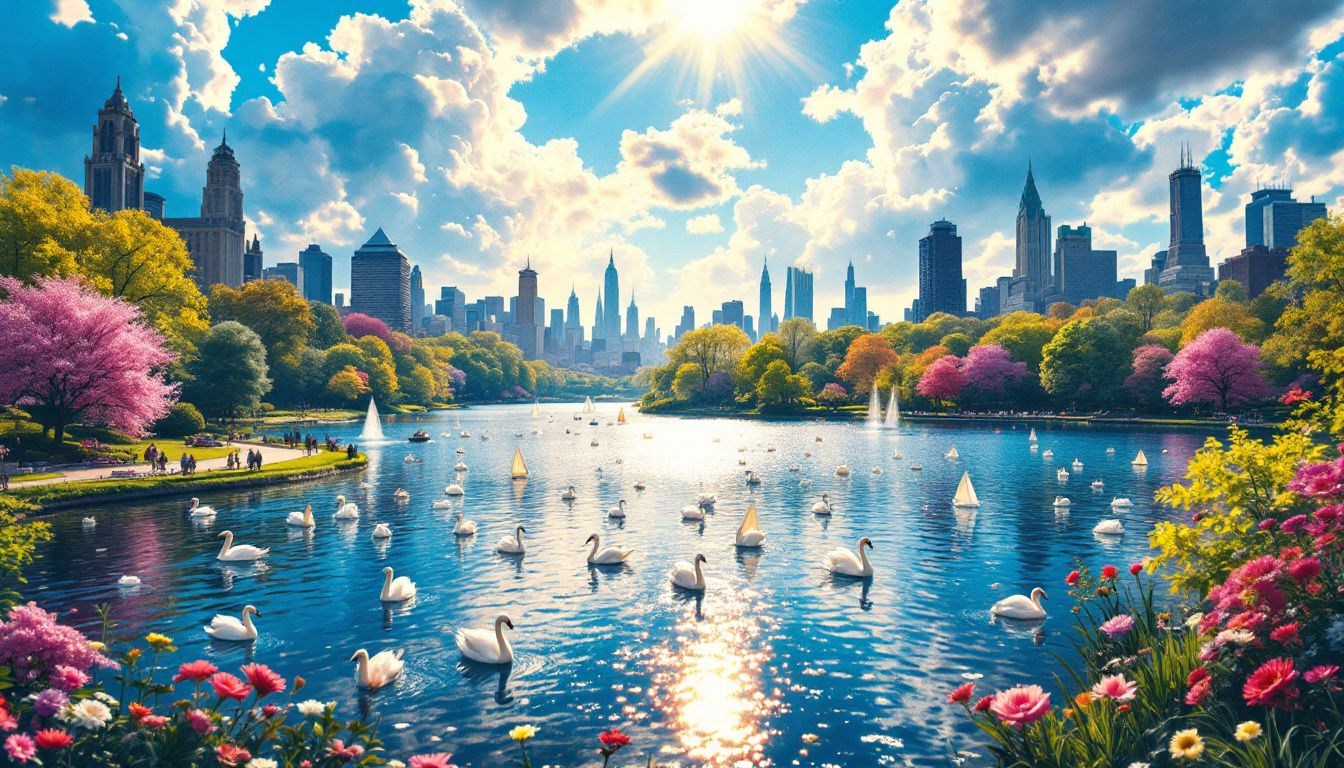
New York State boasts a diverse and breathtaking landscape that spans 54,555 square miles. From the meadows and forests to the rivers, farms, mountains, and lakes, the state’s geography is a testament to the natural wonders shaped by ancient tectonic and erosive movements. The lowest point in New York is at sea level on the Atlantic Ocean, while its varied topography offers a wide array of outdoor experiences.
Exploring New York’s natural beauty means venturing into its major water bodies, national and state parks, and scenic regions. Each of these elements adds to the state’s allure, providing both residents and visitors with endless opportunities to connect with nature and enjoy outdoor activities.
The next subsections delve deeper into these geographical marvels.
Major Water Bodies
The Hudson River, explored by Henry Hudson in 1609, is one of New York’s most significant waterways, running through the state and contributing to its ecology and economy. The Mohawk River, a major tributary, flows into the Hudson River valley, enriching the region’s ecosystem. These rivers have played vital roles in the state’s development, serving as crucial transportation and trade routes.
New York is also home to some of the Great Lakes, including Lake Erie and Lake Ontario, which are essential to the state’s economy and natural environment. These vast water bodies provide recreational opportunities, support biodiversity, and contribute to the state’s scenic beauty.
The Delaware River Basin is another key water system, adding to New York’s rich tapestry of natural wonders.
National Parks and State Parks
New York’s parks are a testament to its natural beauty and historical significance. Niagara Falls State Park, the oldest state park in the United States, offers visitors a unique experience with the iconic Maid of the Mist boat ride, bringing them up close to the breathtaking falls. Another gem is Letchworth State Park, often referred to as the ‘Grand Canyon of the East,’ which spans over 14,000 acres and offers stunning views and a variety of outdoor activities.
The Wild Center in Tupper Lake is an innovative nature museum that highlights the natural beauty of the Adirondacks, providing immersive experiences for visitors. These parks, along with numerous others, showcase the diverse landscapes and recreational opportunities that New York State has to offer, making it a haven for nature enthusiasts and adventurers alike.
Scenic Regions
New York State is renowned for its scenic regions that offer breathtaking views and diverse landscapes. The Finger Lakes region, located between central and western New York, is a popular tourist destination known for its stunning lakes, wineries, and outdoor activities. This area attracts visitors seeking both relaxation and adventure, making it a key part of New York’s natural allure.
The Hudson Valley is another picturesque region, offering a blend of natural beauty and historical significance. The valley’s rich ecosystem, enhanced by the Mohawk River, provides a tranquil escape from the hustle and bustle of city life.
These scenic regions not only enhance the beauty of New York State but also draw countless visitors each year, eager to explore its diverse landscapes and outdoor wonders.
Economic and Cultural Hubs
New York State is a melting pot of economic and cultural activities, with hubs that drive its economy and showcase its vibrant culture. The state’s diverse cultural landscape is influenced by various immigrant communities, contributing to its rich tapestry of lifestyles and traditions.
We explore three major regions: New York City, Upstate New York, and Long Island, each with unique economic and cultural contributions.
New York City
New York City, the beating heart of the Empire State, is a global cultural and financial hub. The city’s cultural sector significantly contributes to the economy, generating over $21 billion in annual economic output and employing around 400,000 individuals. NYC is also a major player in the tech industry, with its AI sector and Silicon Alley attracting substantial venture capital investment.
Tourism is another vital aspect of New York City’s economy, with nearly 30 million tourists visiting the cultural sector in 2015 alone. The city’s diverse artistic expressions, world-renowned museums, and vibrant nightlife make it a central hub for culture and creativity, drawing visitors from around the globe.
Upstate New York
Upstate New York, encompassing cities like Buffalo and Rochester, plays a significant role in the state’s economic landscape. Buffalo, one of the largest cities in Western New York, boasts a diverse economy with thriving industries and a vibrant cultural scene. Rochester, known for its strong manufacturing base and technological advancements, further enhances the region’s economic development.
The Erie Canal, a critical trade route, greatly benefited these cities, facilitating trade and transportation and contributing to their economic growth.
Upstate New York’s blend of economic vitality and cultural richness makes it an essential part of the Empire State’s overall appeal.
Long Island
Long Island, located just east of New York City, is renowned for its beautiful beaches, affluent communities, and cultural attractions. The region is also a STEM education and biotechnology hub, with various companies contributing to these sectors. Long Island’s educational programs and biotech firms underscore its importance in the tech and health industries.
Recreational activities like deep sea fishing are popular on Long Island, with numerous charters and fishing spots on the Atlantic coastline. The Gold Coast, featuring lavish mansions from the Gilded Age, adds to the region’s historical charm and allure.
Long Island’s unique blend of education, industry, and recreation make it a standout region in New York State.
Landmarks and Attractions
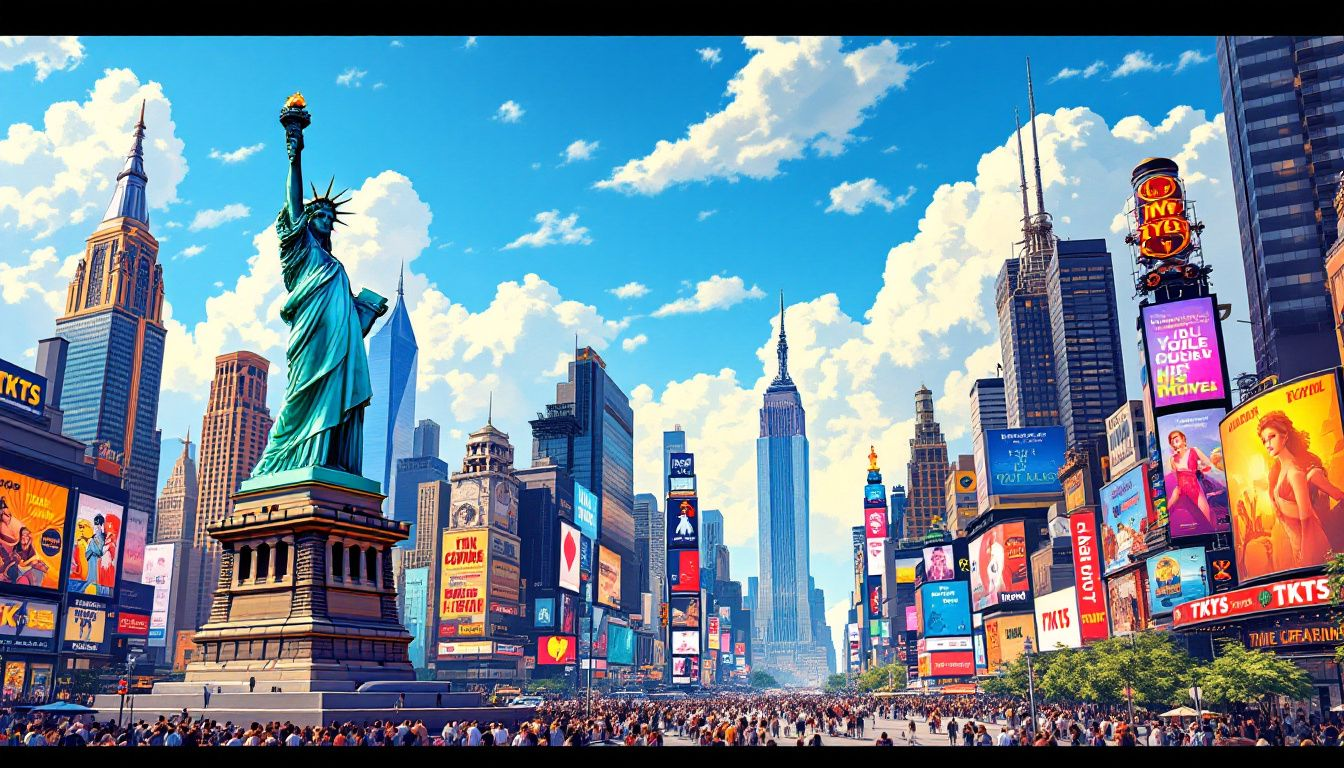
New York State is home to many landmarks and attractions that draw millions of visitors each year. From the iconic Statue of Liberty to the scenic beauty of Niagara Falls, the state offers a wide range of experiences for tourists and residents alike. These landmarks symbolize the state’s rich history and highlight its architectural prowess and natural beauty.
Exploring New York’s landmarks means delving into its iconic structures, historic sites, and entertainment venues. Each of these elements adds to the state’s charm, giving visitors a deeper understanding of its cultural and historical significance. These attractions are explored in detail in the next subsections.
Iconic Structures
New York’s architectural landscape is defined by several iconic structures that have become symbols of the state’s ingenuity and historical significance. The Empire State Building, an Art Deco skyscraper completed in 1931, was the tallest in the world at the time of its completion. Its towering presence continues to dominate the New York City skyline, representing its architectural prowess and ambition.
Another architectural marvel is the Brooklyn Bridge, completed in 1883. This revolutionary suspension bridge, known for its stunning Gothic arches, connects Manhattan and Brooklyn, facilitating transportation and becoming one of the city’s most recognized landmarks.
These structures define New York’s skyline and embody its rich historical and cultural legacy.
Historic Sites
New York State is steeped in history, with numerous historic sites that offer a glimpse into its past. The Statue of Liberty, dedicated in 1886, stands as a symbol of freedom and democracy, attracting millions of visitors yearly. Another significant site is Fort Amsterdam, founded by the Dutch in 1625 at the southern tip of Manhattan, marking the growth of New Amsterdam, which later became New York City.
The state also has 262 national historic landmarks and 5,379 listings on the National Register of Historic Places, showcasing its rich heritage. The National September 11 Memorial & Museum, which opened to the public on September 11, 2011, is another poignant reminder of the state’s history, commemorating the tragic events of 9/11 and honoring the lives lost.
These historic sites connect deeply to New York’s past, enriching the state’s historical narrative.
Entertainment Venues
New York’s entertainment scene is as vibrant and diverse as its cultural landscape. The National Comedy Center, located in Jamestown, celebrates the art of comedy with interactive exhibits that provide visitors a fun and educational experience. This venue is dedicated to preserving and showcasing the history of comedy, making it a unique attraction in the state.
Long Island’s gold coast mansions, with its lavish mansions and the award-winning wineries scattered throughout the state, offer a taste of luxury and refinement. These entertainment venues, along with countless others, highlight New York’s commitment to providing diverse and engaging experiences for residents and visitors alike.
Public Services and Infrastructure
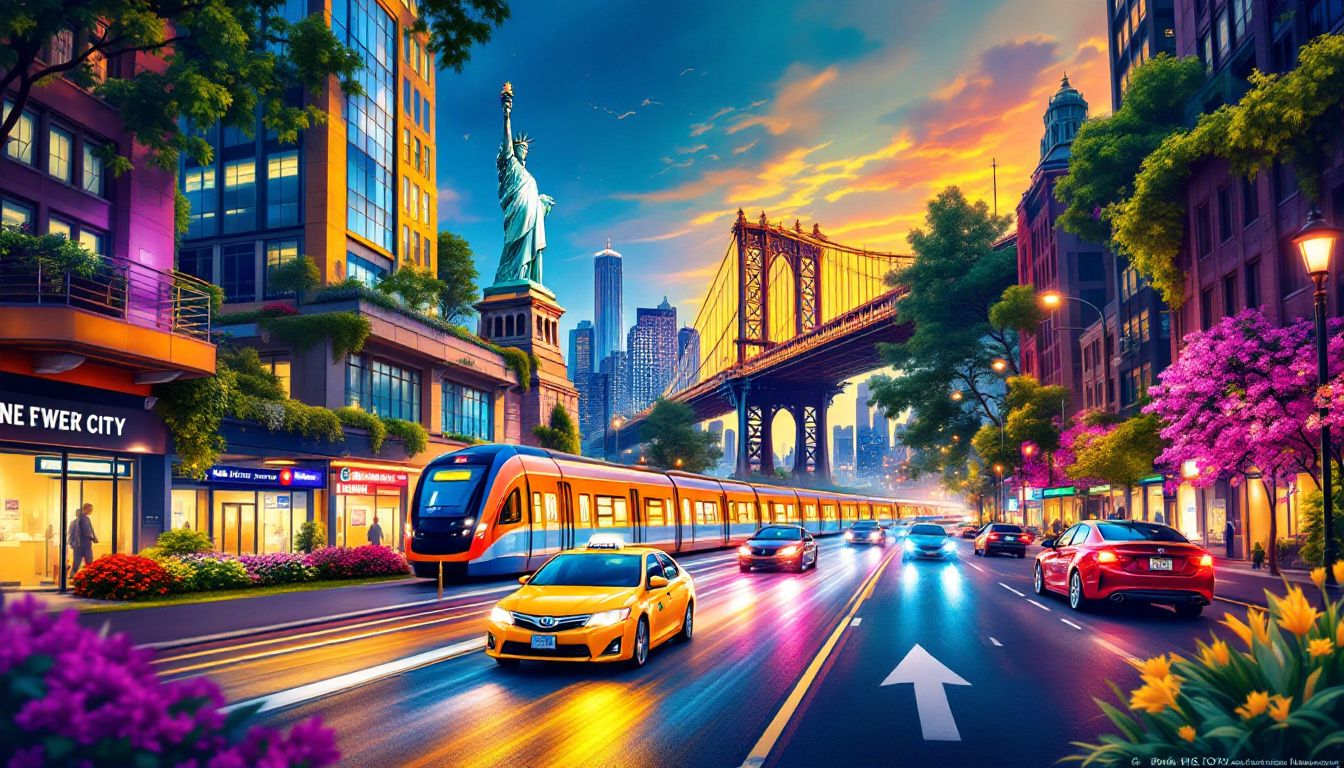
New York State’s commitment to enhancing public services and infrastructure is evident in its substantial budget allocations and ongoing projects. The state budget for FY 2025 amounts to $237 billion, reflecting its dedication to maintaining and improving essential services. Climate-related risks are being addressed through various initiatives, ensuring the state’s resilience and sustainability.
The state’s focus on infrastructure and transportation projects is crucial for maintaining its competitive edge on a global scale. Long Island’s concentration of biotechnology companies and thriving STEM educational programs further underscore the state’s investment in tech and health sectors.
The next subsections explore specific aspects of New York’s public services and infrastructure.
Transportation Networks
New York City’s transportation infrastructure is managed by the New York City Department of Transportation, ensuring efficient and reliable services for millions of residents and visitors. The subway system, a vital part of the city’s public transport, serves millions of commuters daily, making it an essential component of urban mobility.
The AirTrain JFK, which connects John F. Kennedy International Airport with the New York City subway, enhances access to air travel and facilitates smooth transportation for travelers. Railroads replaced canals for transportation after 1850, marking a significant shift in logistics and travel within the state.
These transportation networks are critical to New York’s infrastructure, supporting its dynamic economy and bustling urban life.
Healthcare Services
New York State offers its residents a wide range of healthcare facilities and services, ensuring access to quality medical care. Specialized healthcare programs are available for 9/11 first responders and survivors, reflecting the state’s commitment to supporting those affected by the tragic events. These programs provide comprehensive medical care and support, assisting individuals in their recovery and well-being.
The state’s healthcare infrastructure includes numerous hospitals, clinics, and specialized medical centers that cater to diverse health needs. By prioritizing healthcare services, New York ensures its residents have access to the necessary resources to maintain good health and improve their quality of life.
Educational Institutions
New York State is renowned for its diverse and prominent educational institutions contributing significantly to various fields. The state hosts numerous acclaimed culinary schools that foster talent in the food industry, enhancing the local gastronomic landscape. These institutions provide top-notch education and training, preparing chefs for successful careers in the culinary arts.
Renowned culinary institutes, such as those found on Long Island, are vital in maintaining New York’s reputation as a renowned culinary institute. These educational institutions not only support the state’s economy but also enrich its cultural fabric by promoting excellence and innovation in various disciplines.
Government and Politics
New York’s government is structured into three main branches: executive, legislative, and judicial, ensuring a balanced and effective governance system. This structure allows for the efficient management of the state’s resources and services, addressing the needs of its diverse population.
The state’s political landscape is dynamic, with ongoing efforts to implement policies that improve the lives of New Yorkers. Recent policies have focused on areas such as labor rights, healthcare benefits, and family support, reflecting the government’s commitment to enhancing the well-being of its residents.
The following subsections will delve deeper into administrative divisions, federal representation, and recent policies.
Administrative Divisions
New York is divided into 62 counties, each with unique character and administrative structure. The smallest city in New York State is Sherrill, while Albany, the capital, is the sixth-largest city. These administrative divisions are crucial in managing local affairs and providing services to residents.
The state’s administrative framework ensures that each county and city can address the specific needs of its population, fostering a sense of community and local governance. This structure supports the efficient delivery of public services and the implementation of state policies at the local level.
Federal Representation
Two senators represent New York in the U.S. Senate, reflecting its significant influence in federal politics. This federal representation ensures that the state’s interests are considered in national decision-making processes, contributing to the country’s overall governance.
The state’s political clout extends beyond its borders, impacting regional and national policies. New York’s representation in the federal government highlights its importance in shaping the political landscape of the United States, advocating for policies that benefit both the state and the nation.
Recent Policies
Recent policies in New York have profoundly impacted the lives of its residents, particularly in areas such as labor rights and healthcare benefits. The FY 2025 budget allocates significant resources to increase the minimum wage and implement paid prenatal leave, supporting working families. These measures represent a commitment to improving working conditions and supporting families in New York State.
These policy changes reflect the government’s dedication to enhancing the quality of life for New Yorkers, ensuring that the state remains a leader in progressive legislation. By focusing on the well-being of its residents, New York continues to set an example for other states to follow.
Culture and Lifestyle
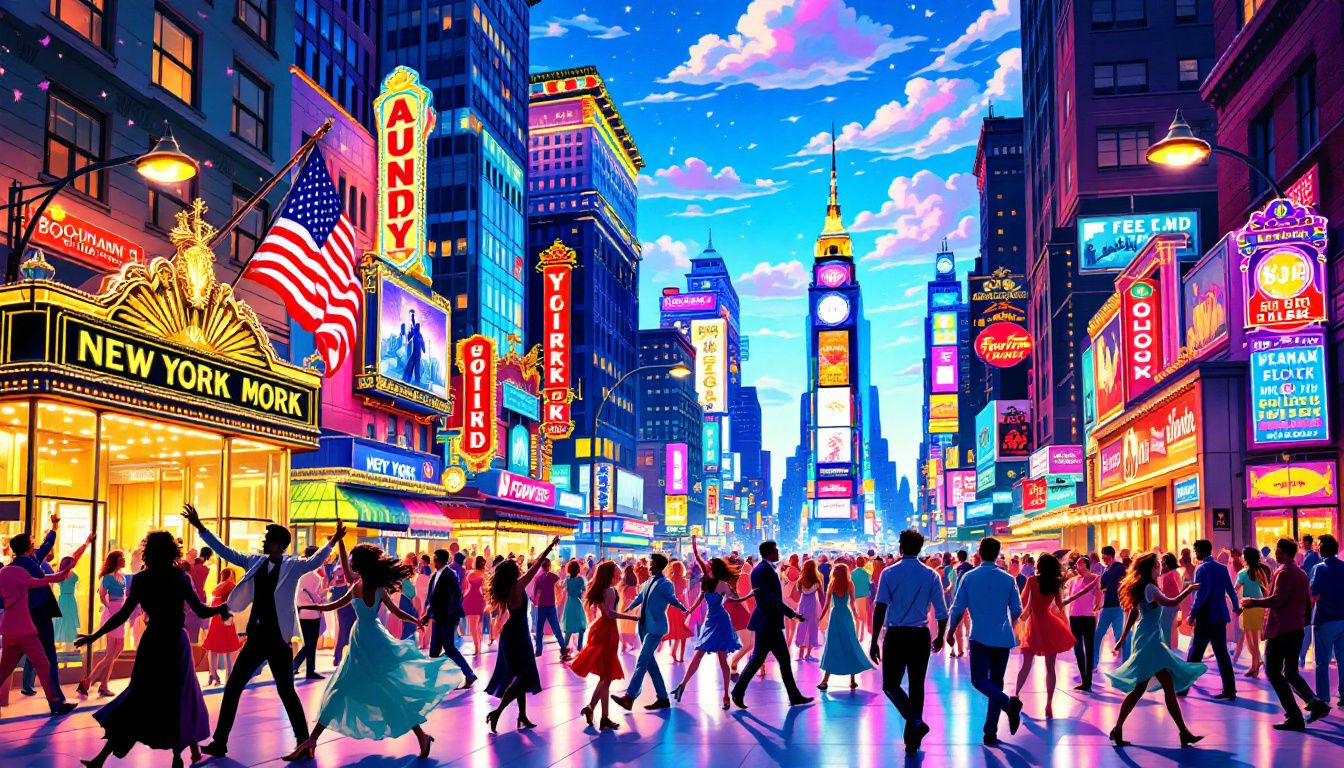
New York State’s culture and lifestyle are diverse and vibrant, featuring a wide range of attractions from historical sites to cultural experiences, reflecting its rich heritage and dynamic way of life. The Strong National Museum of Play and other landmarks showcase the state’s commitment to preserving its cultural legacy while providing engaging experiences for families.
New York’s lifestyle is shaped by its diverse population, with influences from various immigrant communities enriching the state’s cultural fabric. This blend of traditions and modernity creates a unique environment where residents and visitors can enjoy various cultural and recreational activities.
Culinary Scene
New York’s culinary scene is renowned for its diversity and excellence. New York City ranks second in the U.S. for its diverse culinary offerings, featuring numerous Michelin-starred restaurants that showcase a blend of international cuisines and local specialties. Iconic dishes such as New York-style pizza, bagels with lox, and the Rochester Garbage Plate are beloved by locals and visitors alike.
Cities like Syracuse and Buffalo also contribute to the state’s rich food culture, offering unique culinary experiences that reflect their local heritage. The state’s renowned culinary institutes ensure that New York remains at the forefront of the culinary world, fostering talent and innovation in the food industry.
Festivals and Events
New York hosts various major festivals that celebrate different cultures, adding to the state’s vibrant cultural scene. The Lunar New Year celebrations in New York include vibrant parades and artistic performances, attracting large crowds and promoting cultural heritage. These festivities are the largest Lunar New Year celebrations outside Asia, drawing thousands of visitors yearly.
The state’s rich tradition of festivals and events allows residents and visitors to engage with diverse cultures and traditions, fostering a sense of community and shared experience. Whether winter festivals or cultural parades, New York’s events offer something for everyone, enhancing the state’s cultural landscape.
Media and Entertainment
New York State is a major hub for the media and entertainment industry, hosting a diverse range of film, television, and theater productions. The filmed entertainment industry contributed approximately $9 billion to New York City’s economy in 2015, highlighting its significant impact on its economic landscape.
The state’s vibrant media and entertainment sector reflects its dynamic culture, providing countless creative expression and entertainment opportunities. From Broadway shows to independent film festivals, New York’s media and entertainment offerings draw audiences worldwide, solidifying its reputation as a cultural powerhouse.
Summary
New York State is a land of remarkable diversity and endless possibilities. From its rich historical background and breathtaking geography to its vibrant economic and cultural hubs, the state offers a unique blend of experiences that cater to every interest. The iconic landmarks and attractions, essential public services and a dynamic political landscape, make New York a truly exceptional place.
As we conclude this comprehensive guide to the Empire State, we hope you’ve gained a deeper understanding and appreciation of what makes New York so unique. Whether planning a visit or simply exploring from afar, New York’s allure is undeniable, promising unforgettable experiences and lasting memories.
Frequently Asked Questions
What are the major Native American tribes that originally inhabited New York?
The major Native American tribes that originally inhabited New York were the Iroquois and the Algonquians. The Iroquois formed a confederation of several tribes, while the Algonquians had unique languages and cultural practices.
How did the Erie Canal impact New York’s economy?
The Erie Canal significantly bolstered New York’s economy by establishing a vital trade route that linked the Atlantic Ocean to the Great Lakes, fostering growth in various cities across the state. This enhanced connectivity facilitated increased trade and commerce, solidifying New York’s position as an economic powerhouse.
What are some of the iconic structures in New York State?
The Empire State Building and the Brooklyn Bridge are iconic structures in New York State, exemplifying its rich architectural heritage and historical importance.
What specialized healthcare programs does New York offer?
New York provides specialized healthcare programs for 9/11 first responders and survivors, ensuring they receive comprehensive medical care and support tailored to their unique needs.
What are some of the major festivals celebrated in New York?
One major festival celebrated in New York is the Lunar New Year, recognized as the largest celebration outside Asia, showcasing vibrant parades and cultural performances. Other significant festivals include the West Indian American Day Carnival and the New York Film Festival, reflecting the city’s diverse cultural landscape.

